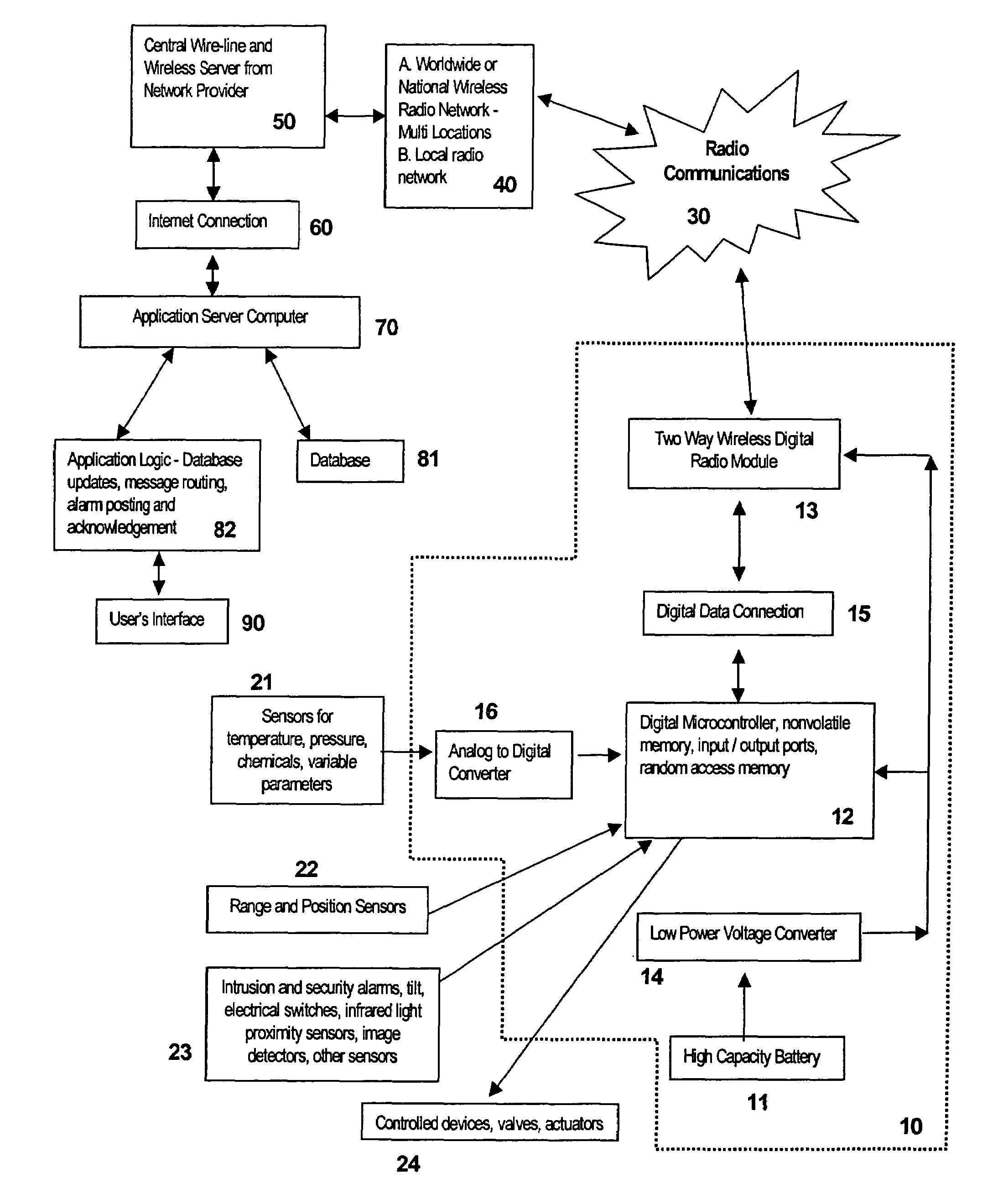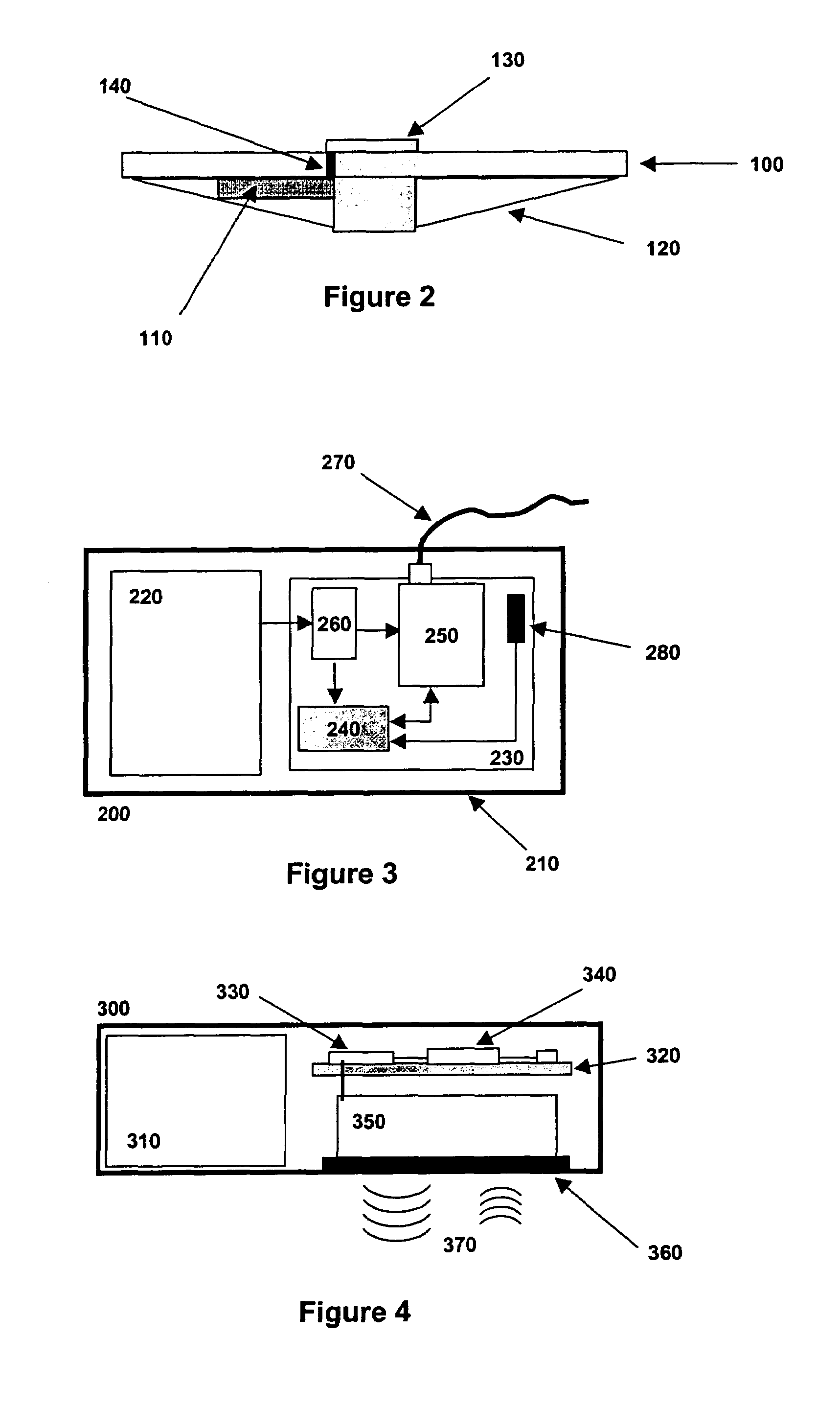Remote sensing and communication system
a communication system and remote sensing technology, applied in the field of remote sensing and communication systems, can solve the problems of increasing the cost of sanitation and waste water systems, sewage spills, illegal dumping, and complex and costly problems of sanitation systems, and achieve the effects of low cost, constant and reliable power, and low power consumption
- Summary
- Abstract
- Description
- Claims
- Application Information
AI Technical Summary
Benefits of technology
Problems solved by technology
Method used
Image
Examples
Embodiment Construction
[0023]The present invention provides a system and method for combining self-contained power, electronics, communications, computational capability and sensors into a low cost and low power device integrated directly into and mounted on an enclosure barrier such as a manhole cover to provide sensing and rapid early warning of problems in the enclosure or around the enclosure barrier. The sensors include, but are not limited to, a level sensor, a flow sensor, a pressure sensor, a ranging sensor, an ultrasonic ranging detector protected by a water resistant fabric, a gas sensor, an odor sensor, a temperature sensor, an optical monitor, such as a video camera, still camera or an infrared sensor. Furthermore, the sensors can be physically disconnected from the manhole cover and mounted on the walls or the floor of the manhole. For example, a float switch may be remotely located at the bottom of the manhole with an infrared or ultrasonic means of contacting the housing. In the case of a t...
PUM
 Login to View More
Login to View More Abstract
Description
Claims
Application Information
 Login to View More
Login to View More - R&D
- Intellectual Property
- Life Sciences
- Materials
- Tech Scout
- Unparalleled Data Quality
- Higher Quality Content
- 60% Fewer Hallucinations
Browse by: Latest US Patents, China's latest patents, Technical Efficacy Thesaurus, Application Domain, Technology Topic, Popular Technical Reports.
© 2025 PatSnap. All rights reserved.Legal|Privacy policy|Modern Slavery Act Transparency Statement|Sitemap|About US| Contact US: help@patsnap.com



